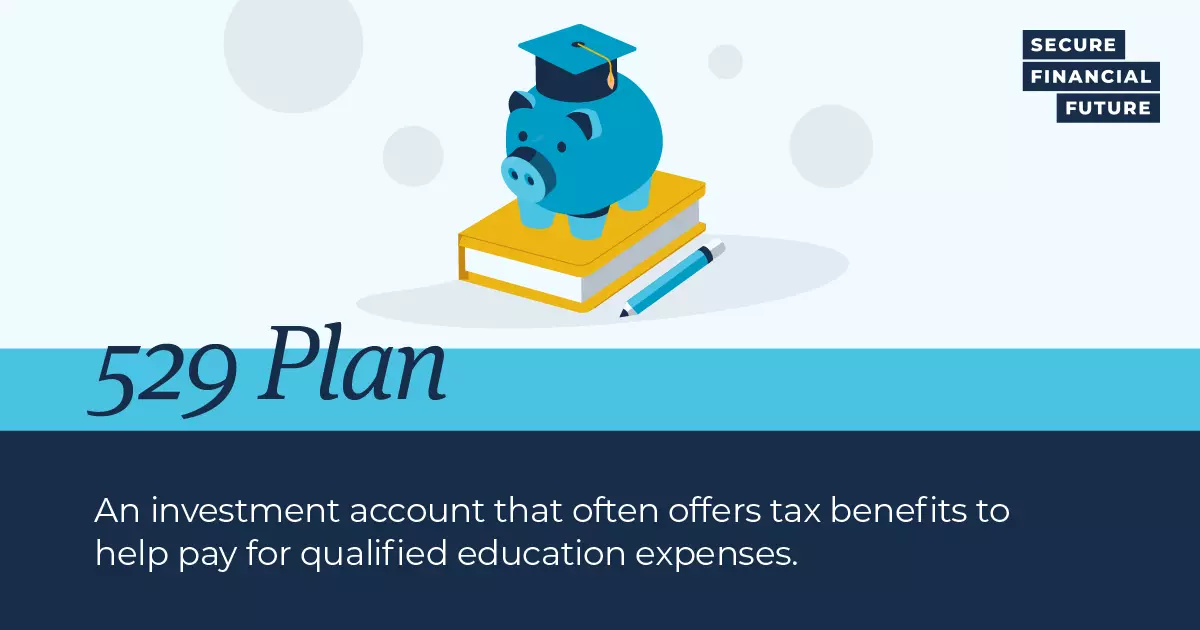Investing 101: 529 Education Plans

Planning for your child's education can be a daunting task. The rising costs of college tuition and expenses make it crucial to start saving early. Fortunately, there's a flexible and tax-efficient way to invest in your child's future: 529 plans. These educational savings accounts have been around for almost three decades and offer a host of benefits.
529 plans were created to address the growing need for affordable education financing. They are named after Section 529 of the federal tax code. These plans were originally created by Congress as a way for families to save for qualified higher education expenses, such as tuition, fees, books, supplies, and even room and board. Recent updates to laws regarding 529 plans have expanded qualified expenses so you can use 529 savings to cover apprenticeships and technical school, mid-career changes, K-12 tuition, student loan payments, and more.
One of the most significant recent expansions of 529 usage is the ability to roll over funds from a 529 plan into a Roth IRA penalty-free. The lifetime rollover limit is $35,000 and accounts must have been opened for 15 years, with contributions and earnings made within the last five years not eligible. This provision could be a helpful planning tool for families as they consider ‘how much’ is needed to fund educational needs. SFF will continue to keep you up to date with how this is implemented in practice.

There are two types of 529 plans: prepaid tuition plans and college savings plans.
Prepaid tuition plans allow you to pay tuition ahead of time for specific colleges or college systems, shielding you from the rising costs of education. There are currently 11 prepaid tuition plans offered by 10 states.
College savings plans are the most common 529 plan and provide a broader range of investment options, allowing your contributions to grow tax-free over time.
One of the most significant advantages of 529 plans is their tax benefits. While contributions to these plans are not deductible on your federal income tax return, the investment earnings in a 529 plan grow tax-free. When you withdraw funds for qualified education expenses, those withdrawals are also tax-free. This tax-free growth and distribution make 529 plans a great option for parents looking to secure savings for their children’s future.
529 plans provide flexibility when it comes to the beneficiary. If your child decides not to pursue higher education or receives a scholarship, you can change the beneficiary to another eligible family member without penalty. This feature ensures that your hard-earned savings won't go to waste if your child's plans change unexpectedly.
Additionally, 529 plans offer a wide range of investment options, allowing you to tailor your investment strategy to fit your financial needs. Bond, target-date, and equity funds are just some examples of investment options. 529s allow freedom to create a portfolio that aligns with your financial goals.
Some states offer tax incentives for contributing to a 529 plan. These incentives may include deductions or credits on your state income tax return, further reducing your overall tax burden. It's essential to check your state's specific rules and regulations to take full advantage of these benefits.
It's worth noting that 529 plans have contribution limits, which vary by state. While these limits are generally high, it's crucial to keep them in mind when planning your savings strategy. However, you can front-load your contributions by contributing up to five years' worth of the annual gift tax exclusion amount in a single year without incurring a federal gift tax.
529 plans are a powerful tool for investing in your child's future. With their tax benefits, flexibility, and potential for growth, they offer a compelling way to save for higher education expenses.
As with any investment, it's essential to stay informed and proactive. Changes in legislation and policies can impact the benefits and regulations surrounding 529 plans. At SFF, we believe in empowering families to secure their children's financial futures by educating them on the powerful investment resources available, including 529 plans.

